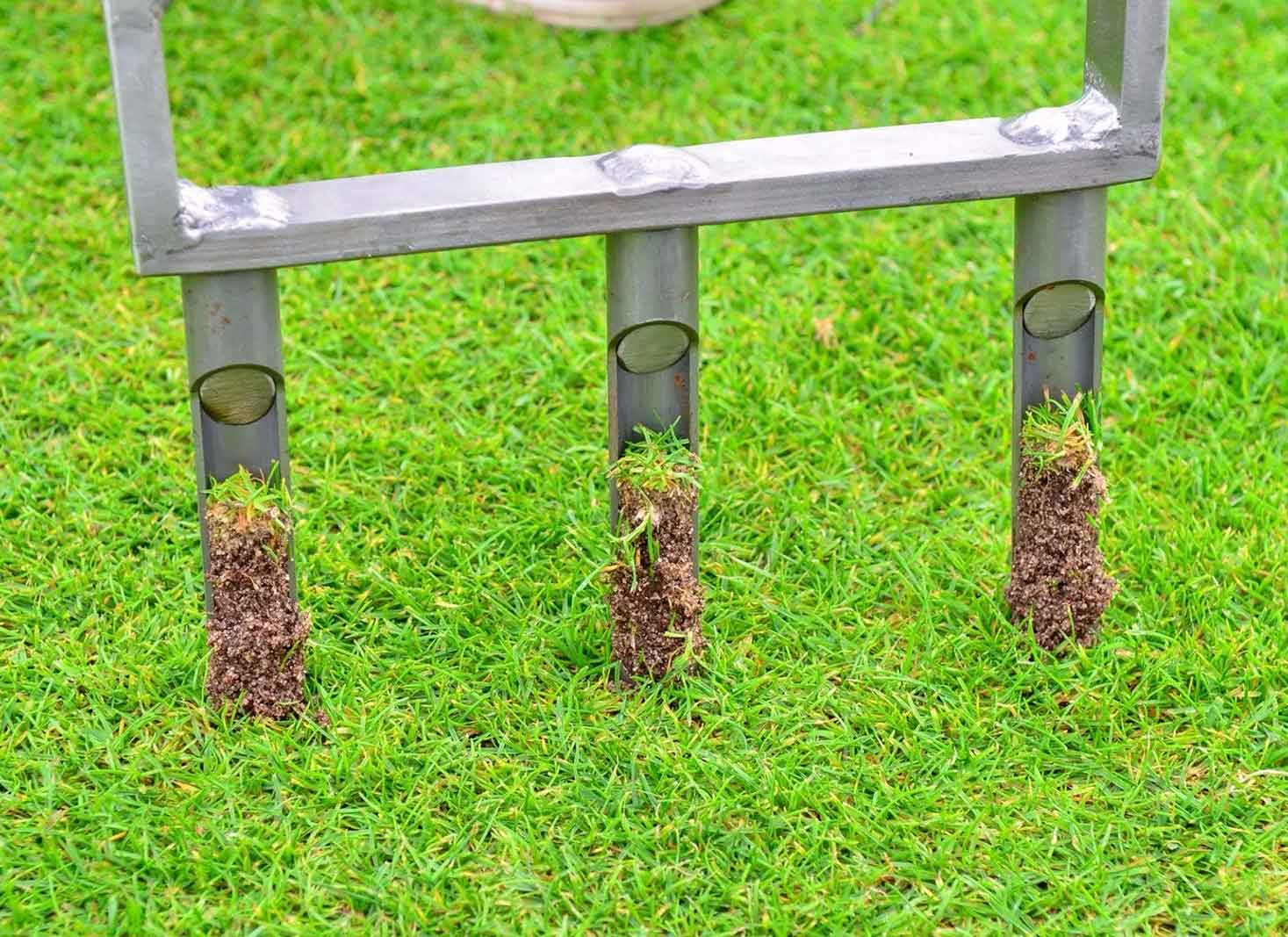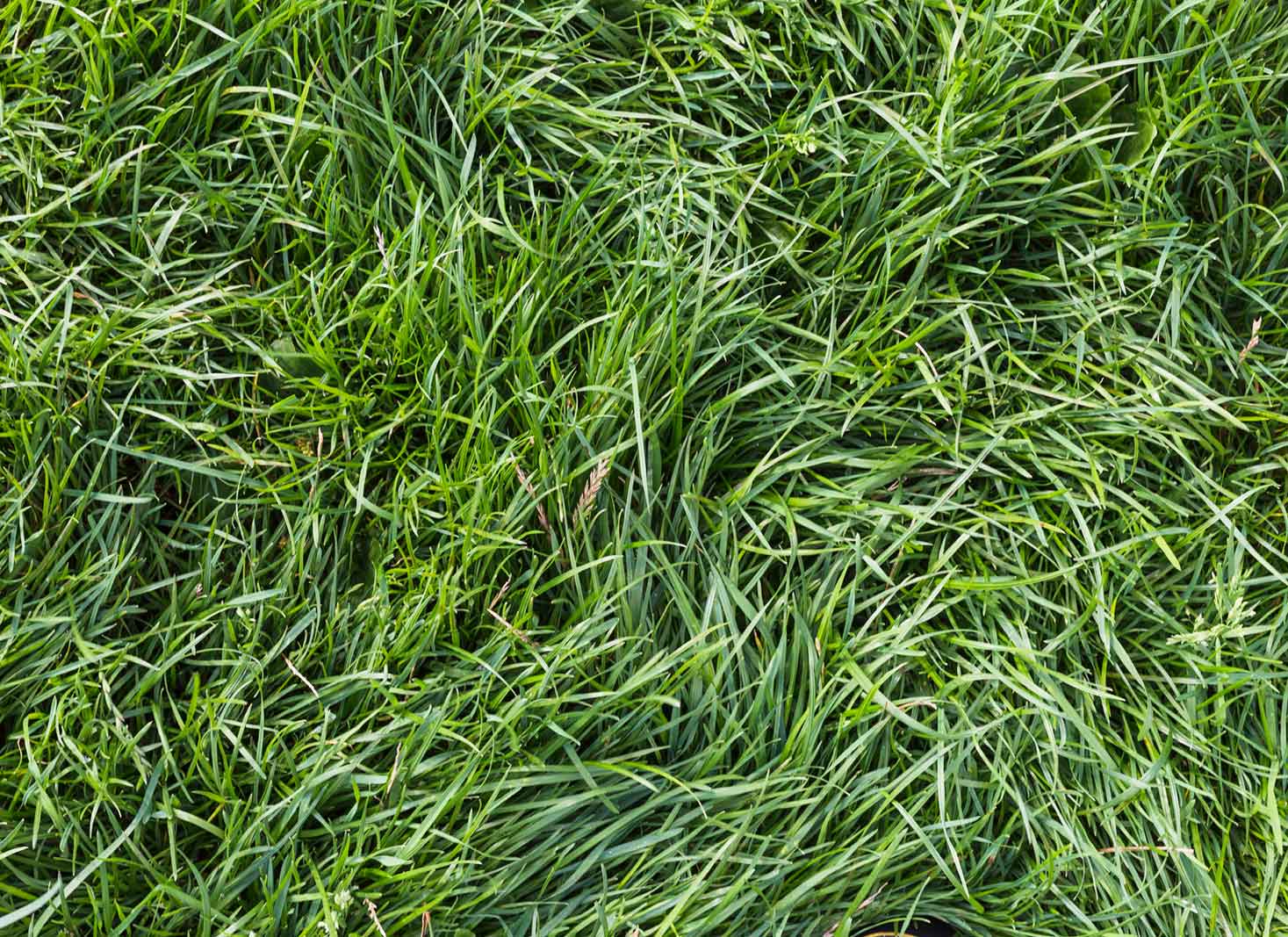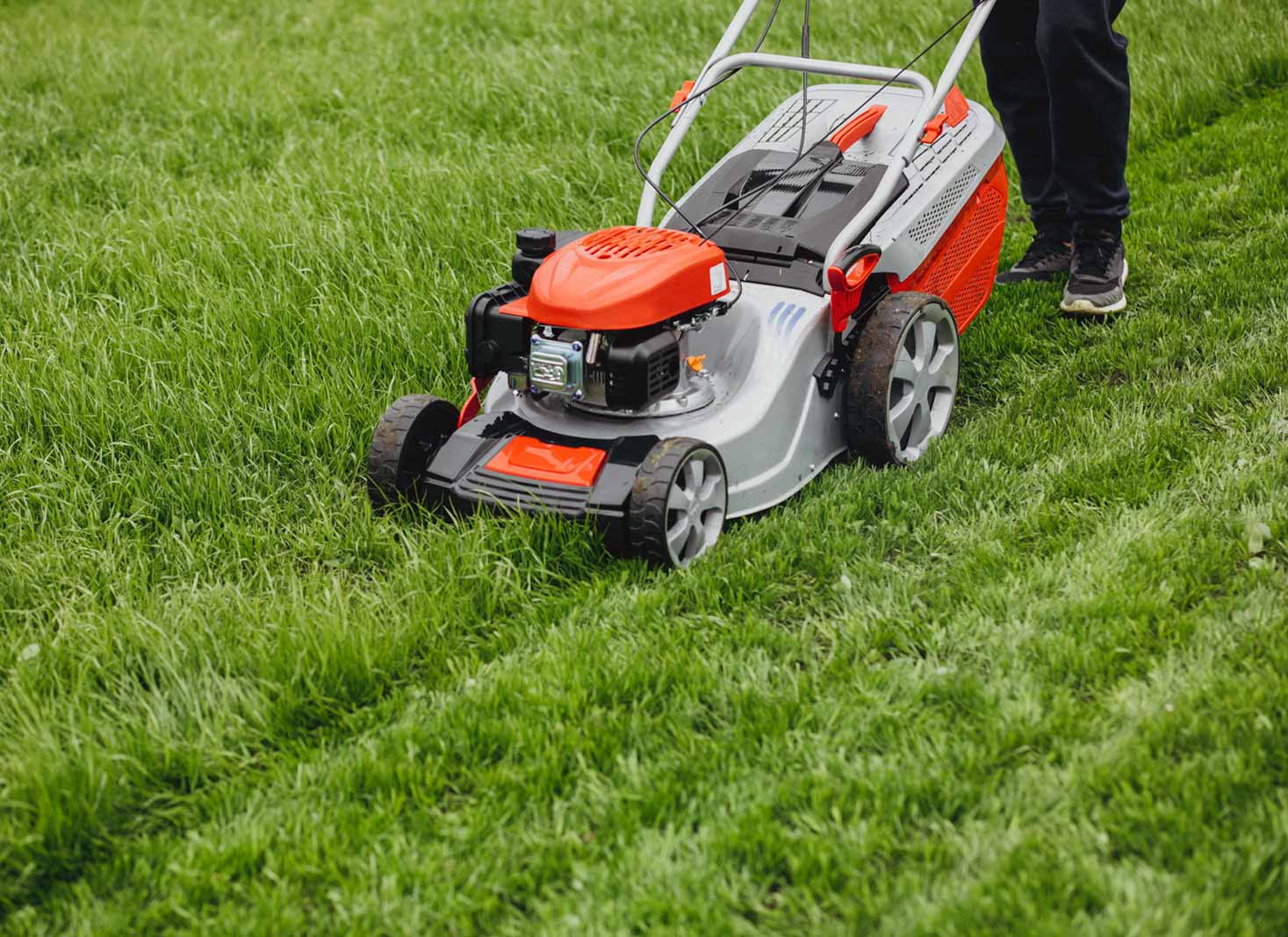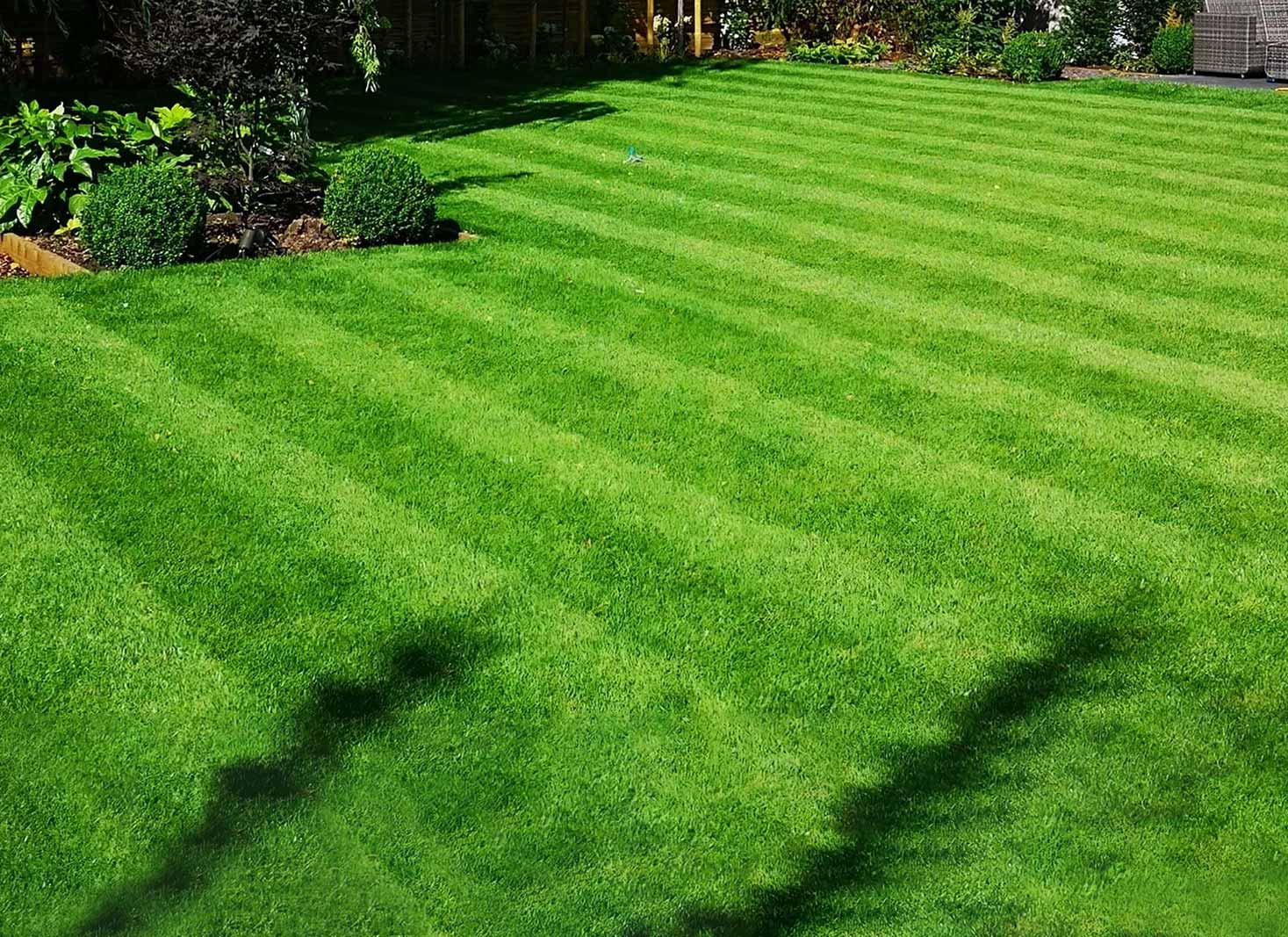Do you dream of a lush, healthy lawn that’s the envy of your neighbors? Lawn aeration is your secret weapon to achieving that picturesque yard. However, timing is crucial to maximize the benefits of aeration.
The best time to aerate your lawn is fall for cool-season grasses and spring for warm-season grasses.
There are a few more ins and outs of lawn aeration before you begin poking holes in your yard. Below we go through methods and practical tips to ensure successful aeration and a thriving lawn.
What we cover
ToggleShort Summary
- Aerating your lawn helps to circulate air and allows water and essential nutrients penetration.
- Lawn aeration should be done during the growing season for optimal health. Warm-season grasses in late spring to early summer, cool-season in fall. Soil moisture levels should be moderately moist for successful aeration.
- Tips include synchronizing with other lawn care tasks, hiring a service or DYing depending on budget/time/resources available, and monitoring post-aeration health of the turf.
Understanding Lawn Aeration

Aeration is the process of circulating air and allowing water to penetrate the roots of your lawn, helping to maintain a healthy and lush lawn. The best time to aerate your lawn will depend on the grass type. Typically cool, season grasses prefer fall and warm-season grasses from late spring to early summer. Aeration is especially advantageous for lawns displaying conditions like compacted soil, heavy clay soil, or thick thatch buildup, as it allows crucial nutrients, air, and moisture to penetrate the soil and reach the grassroots.
Understanding the role of aeration in lawn health and addressing soil compaction and thatch buildup can make a significant difference in the overall appearance and vitality of your lawn. Let’s delve deeper into these aspects to ensure a thriving, healthy lawn.
When to aerate by grass type
| Grass type | When to aerate |
|---|---|
| Cool season grasses | Fall |
| Warm season grasses | Late Spring to early summer |
Scroll to the bottom to see the full list of warm-season and cool-season grasses.
The Role of Aeration in Lawn Health
Lawn aeration involves creating holes in the soil to enhance the delivery of air, water, and nutrients to the dirt and grassroots. A well-aerated lawn facilitates a more substantial and healthier root system, allowing your lawn to withstand adverse conditions like heat and low precipitation. Additionally, aeration encourages microbes to decompose thatch, the layer of dead grass, roots, and other organic matter that accumulates on the soil surface.
Signs that your lawn may require aeration include:
- Thin grass
- Bald spots
- Discolored grass
- Water puddles and runoff
Aeration helps reverse soil compaction, allowing air, water, and nutrients to access the roots, ultimately promoting the growth of a thicker and healthier turf.
Addressing Soil Compaction and Thatch Buildup
Soil compaction – When the soil is compressed but foot traffic, parked cars or others, making it difficult for the ground to receive air, water, and nutrients.
To address soil compaction and thatch buildup, you can utilize a plug/core aerator or a spike aerator. A plug/core aerator removes plugs or cores of soil and thatch from the lawn, while a spike aerator creates holes by pushing the soil sideways.
Thatch buildup – the accumulation of dead and living organic material on the lawn surface, which can impact oxygen reaching the turf roots.
You can address this with liquid aeration, which involves spraying an enzymatic solution on the lawn to increase oxygen levels in the soil, making it more porous and fertile.
Identifying the Right Time to Aerate Your Lawn

The right time to aerate your lawn depends on several factors, including the type of grass, soil conditions, and the lawn’s usage habits. It’s essential to aerate during the growing season, as this allows the grass to effectively heal and fill in any open spaces after removing soil plugs.
Pro tip: It’s crucial to avoid aerating during periods of extreme heat or drought.
Understanding the differences between grass types and considering soil conditions and moisture levels will help you determine the best time to aerate. Let’s explore these factors in more detail.
Grass Type: Warm Season vs Cool Season
Warm-season grasses thrive in warmer climates, while cool-season grasses flourish in cooler climates. The optimal time to aerate warm-season grasses is during their growth periods in the spring and fall.
Cool-season grasses need aeration in either the early spring or early autumn.
Before aerating, regardless of the grass type, it’s advisable to mow the lawn to prepare the grass for the aeration process. Proper planning and timing based on your grass type will maximize the benefits of aeration, ensuring a healthier and more resilient lawn.
Soil Conditions and Moisture Levels
The ideal soil conditions for aeration are when the soil is moderately moist, not excessively dry or overly wet. To ensure these conditions, it’s recommended to water the lawn at least a day or two before aeration. This helps the aerator penetrate the soil and extract the cores, guaranteeing an effective aeration process.
To determine if your lawn has compaction issues, you can perform a simple screwdriver test by manually inserting a screwdriver into the lawn’s soil. If it slides in with ease, the soil is not compacted. If it meets resistance, the soil is compacted, and aeration may be of assistance.
Lawn Traffic and Usage
Lawns that experience significant pedestrian activity should be aerated at intervals of one to two years. Aeration helps maintain a lush lawn and prevent issues caused by heavy foot traffic.
It’s essential to remember that aeration should be avoided when lawns are transitioning into dormancy. By considering the usage habits of your lawn and planning aeration accordingly, you can ensure a healthy and thriving lawn that can withstand regular wear and tear.
Aeration Methods and Tools
There are various methods and tools available for lawn aeration, ranging from manual tools to more sophisticated machinery. The choice of method depends on the size of your lawn, the type of soil, and the extent of compaction or thatch buildup issues.
Let’s examine some popular aeration methods and tools, including plug/core aerators, spike aerators, and liquid aeration, to help you decide which is best suited for your lawn.
Plug/Core Aerator
A plug/core aerator is a manual or motorized lawn aerator machine equipped with hollow tines that mechanically remove plugs or cores of soil and thatch from your lawn. This process instantly reduces compaction in the soil, while the open holes allow air, fertilizers, and water to reach the roots. For larger lawns or properties, a motorized machine is the most optimal choice, as it can cover more ground in a shorter amount of time.
Core aeration is particularly effective in alleviating compaction and promoting the growth of a thicker and healthier turf by allowing air, water, and nutrients to access the roots. It’s an excellent method for addressing soil compaction and thatch buildup in lawns with heavy clay soil or high-traffic areas.
Spike Aerator
A spike aerator is a gardening tool that makes aeration holes in the ground. It pushes the soil sideways as wedge-shaped spikes penetrate the soil. This method is most suitable for sandy or loamy soils, as it can improve air and water penetration without removing soil plugs.
While spike aeration may not be as effective as core aeration in alleviating soil compaction, it can still provide benefits to the overall health of your lawn by allowing air, water, and nutrients to reach the grassroots.
Liquid Aeration
Liquid aeration is a process that involves spraying a solution on the lawn to increase oxygen levels in the compacted soil. The idea is to make it more porous and fertile. It’s most advantageous to apply liquid aeration in the spring or fall, and its effects are of a prolonged and cumulative nature.
While liquid aeration may not provide the same immediate results as mechanical aeration methods, it can still offer long-term benefits, particularly in addressing thatch buildup. It’s also the most convenient method to apply, as it does not require heavy equipment or manual labor.
Tips for Successful Lawn Aeration

Proper planning and execution are crucial to ensuring a successful lawn aeration project. From the timing of aeration to coordinating with other lawn care tasks, every detail matters.
In this section, we’ll provide practical tips for successful aeration, including timing aeration with other lawn care tasks, deciding between hiring a lawn service or DIY aeration, and monitoring lawn health after aeration.
Timing Aeration with Other Lawn Care Tasks
To maximize the benefits of aeration, coordinate it with other lawn care tasks. For example, it’s essential to mow the lawn and remove any debris prior to aeration. Additionally, watering the lawn a day or two before aeration can help the aerator penetrate the soil more effectively.
By scheduling aeration around other lawn care activities, you can optimize the overall health and appearance of your lawn, ensuring it remains lush and vibrant throughout the year.
Hiring a Lawn Service vs DIY Aeration
Whether to hire a lawn service for aeration or opt for a DIY approach depends on your budget, time, and resources. Hiring a lawn service can be beneficial if you don’t have the necessary equipment or expertise, as professionals can guide you on the optimal time for aeration and whether annual aeration is necessary for your lawn.
On the other hand, DIY aeration can be more economical and give you more control over the process. With the right tools and understanding, you can effectively aerate your lawn and reap the benefits of a healthy, thriving turf.
Monitoring Lawn Health After Aeration

After aeration, it’s crucial to monitor the health of your lawn. Signs of a healthy lawn post-aeration include enhanced drainage, diminished soil compaction and thatch buildup, decreased weed growth, and vigorous root growth.
By regularly assessing your lawn’s health and addressing any issues promptly, you can maintain a lush, thriving lawn that’s the envy of your neighbors. Remember, a healthy lawn is not only beautiful, but also contributes to a more sustainable environment.
Summary
In conclusion, lawn aeration is a vital component of maintaining a lush, healthy lawn. By understanding the role of aeration in lawn health, identifying the right time to aerate based on grass type and soil conditions, and exploring various aeration methods and tools, you can ensure a successful aeration project. With proper planning, execution, and monitoring, your lawn will be the envy of the neighborhood, providing you with a beautiful, sustainable outdoor space for years to come.
List of warm and cool season grasses
To get the best results from lawn aeration, you need to do it at the right time of year for your grass type. Below is a list of the most common cool-season and warm-season grasses.
| Cool season grasses | Warm Season |
|---|---|
| Annual ryegrass (Lolium multiflorum) | Bahia grass (Paspalum notatum) |
| Creeping bent grass (Agrostis palustris) | Bermuda grass (Cynodon dactylon) |
| Creeping red fescue (Festuca rubra var. rubra) | Buffalo grass (Buchloe dactyloides) |
| Kentucky bluegrass (Poa pratensis) | Carpet grass (Axonopus affinis) |
| Perennial ryegrass (Lolium perenne) | Centipede grass (Eremochloa ophiuroides) |
| Tall fescue (Festuca arundinacea) | Saint Augustine grass (Stenotaphrum secundatum) |
| Zoysia grass (Zoysia japonica) |
FAQ's
For optimal lawn health, it is best to aerate your lawn in late summer or early fall. This will give the grass the most time to recover and benefit from the new nutrients added to the soil before going dormant for winter.
However, some lawns may also be successfully aerated in the spring between March and May.
In general, lawn aeration should take place when the grass is actively growing and not going into dormancy. Therefore, it is not advised to aerate warm-season grasses during late summer or early fall.
Aerating cool-season grasses should be reserved for early spring and early fall.
When aerating your lawn, it is generally recommended to do so on slightly moist grass. The best way to achieve this is by ensuring the soil has been watered sufficiently two days before aeration and the night before.
It is important to not aerate when the ground is wet, as this can cause more damage than good.
For optimal lawn health, it is recommended that you aerate your yard at least once a year if your lawn experiences heavy traffic or has compacted soil.
If your lawn gets lighter traffic and is in good condition, it can be beneficial to aerate it every two to four years.
